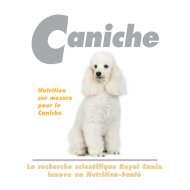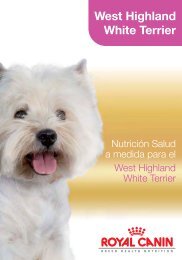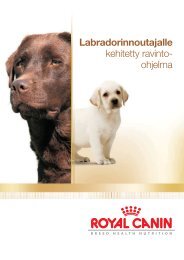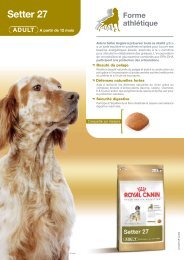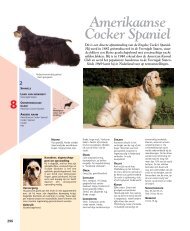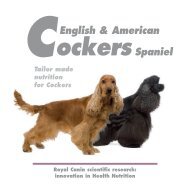Specific breed brochure - Breed Nutrition
Specific breed brochure - Breed Nutrition
Specific breed brochure - Breed Nutrition
Create successful ePaper yourself
Turn your PDF publications into a flip-book with our unique Google optimized e-Paper software.
© J.-M. Labat 2<br />
TAILOR-MADE NUTRITION<br />
FOR ROTTWEILERS<br />
Building, regenerating<br />
and maintaining muscle mass<br />
Objective #1: ensuring the regeneration<br />
of muscle cells<br />
Protein plays a major role in tissue regeneration. The greater the physical and/or psychological<br />
stress on the dog, the faster the cells are regenerated. During effort, 5-15% of the energy expended<br />
comes from protein, yet muscles are the only source of protein in a dog’s body. That means a<br />
higher intake of protein is vital to prevent the dog from drawing from its own muscle protein.<br />
An optimal protein level is essential in an active dog. If it is too low there is a correlation to a higher<br />
risk of muscle or tendon injuries among sporting dogs (Reynolds et al, 1999).<br />
18<br />
Too low a protein intake has dramatic<br />
consequences for a dog’s health,<br />
including anaemia, poor hair quality,<br />
lower immune defences and muscle<br />
atrophy. Conversely, an increase in<br />
the quantity and quality of the protein<br />
intake in sporting dogs helps<br />
improve performance while reducing<br />
the risk of muscle or tendon injuries<br />
(Reynolds et al, 1999). The low indigestible<br />
protein used in Rottweiler<br />
26 is 90% digestible, which helps the<br />
dog extract maximum benefit from<br />
the amino acids* in its food.



